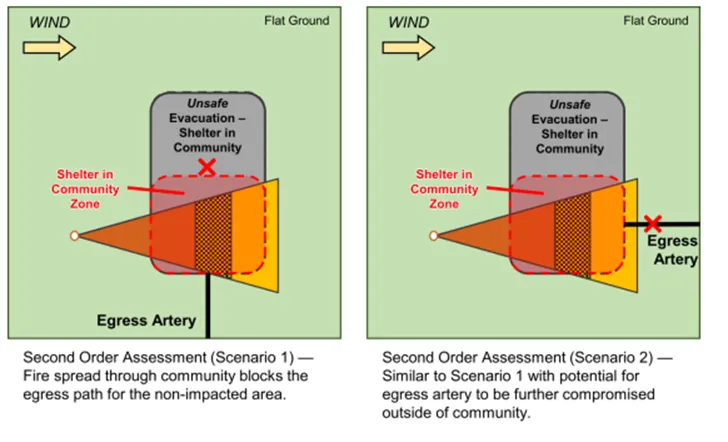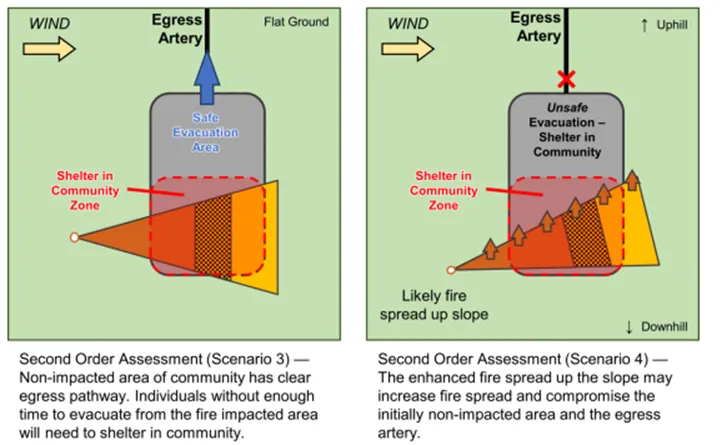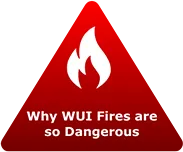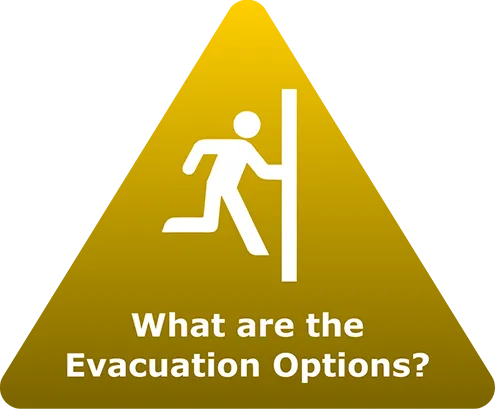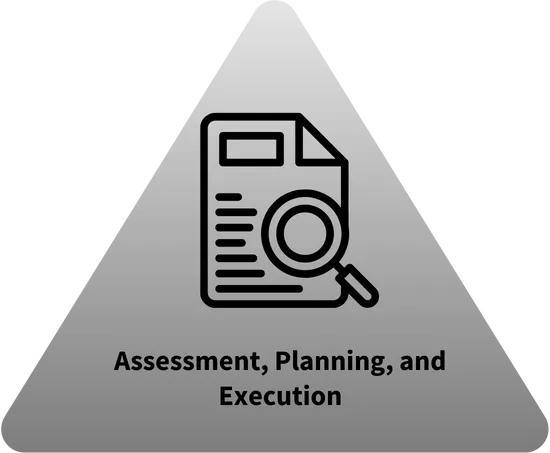
WUI Fire Evacuation and Sheltering Considerations - Assessment Planning and Execution
Develop Evacuation Scenarios for Ignitions in the Red Zone
A fire that ignites in the Red Zone will pose an evacuation challenge if it spreads towards the community and cannot be contained. For ignitions at the outer limit of the Red Zone (at the interface with the Green Zone), evacuation may be completed without fire impacts if the assumed maximum fire spread rate is estimated correctly. Ignitions that occur closer to the community will pose an ever-increasing evacuation risk.
The goal of Step 2 is to identify and characterize scenarios where there is insufficient time to safely evacuate, and develop evacuation solutions, or alternatives, to manage these higher exposures and to reduce the overall fire exposures to civilians.
To develop lower risk solutions, the data and characteristics of egress arteries and the availability of suitable TFRAs will need to be assessed. Egress arteries will need to be evaluated for capacity, accessibility, and potential for burnovers (i.e., fuels and fuel setbacks). Similarly, existing locations for the establishment of TFRAs should be assessed for size, exposures, evacuee capacity, surrounding civilian population, and accessibility. The option of clearing and maintaining fuel reductions along egress arteries should be reviewed together with the option of implementing a system of distributed TFRAs.
The analysis of egress arteries and the implementation of a distributed TFRA system can be used to develop the shelter-in-community response and to assess the feasibility of partial evacuation options. Fuel treatments to enhance access to TFRAs and the implementation of community and parcel hardening programs like HMM should also be considered.
If egress routes pass through the fire's projected path, sheltering in the community may be necessary even for areas of the community that are not directly impacted by the fire. The areas of direct fire and ember exposures determine the zone where shelter in community may be implemented if safe evacuation cannot be achieved.
Workflow to identify evacuation solutions for ignitions in the Red Zone.
- Assess egress arteries for capacity, accessibly, potential for burnovers (fuels and setbacks)
- If there are burnover risks, determine feasibly of reducing fire exposures to egress arteries
- Identify TFRA locations and assess them for fire exposure, evacuee capacity, surrounding civilian population and accessibly
- Assess the need for fuels treatment around TFRAs and their access paths to reduce potential fire exposures
